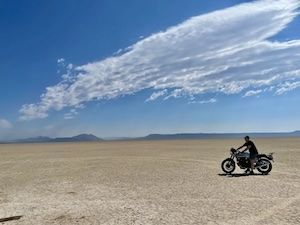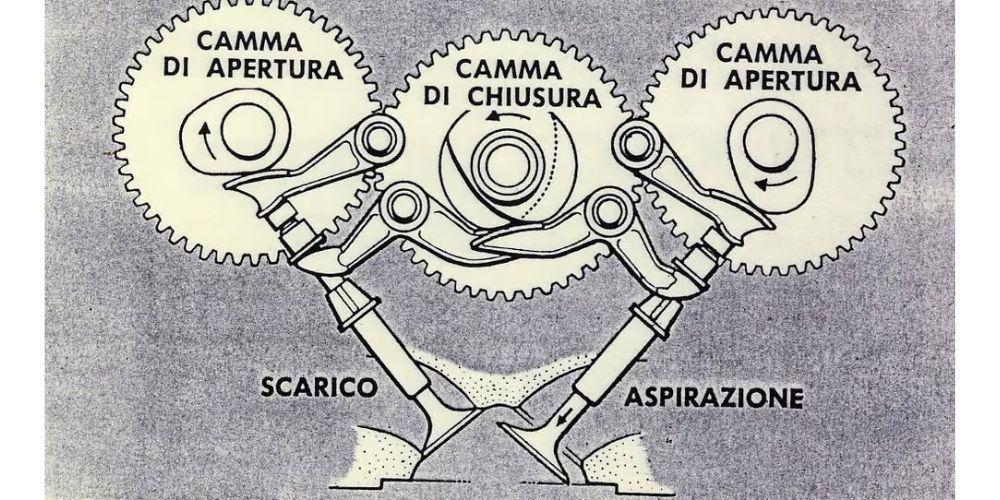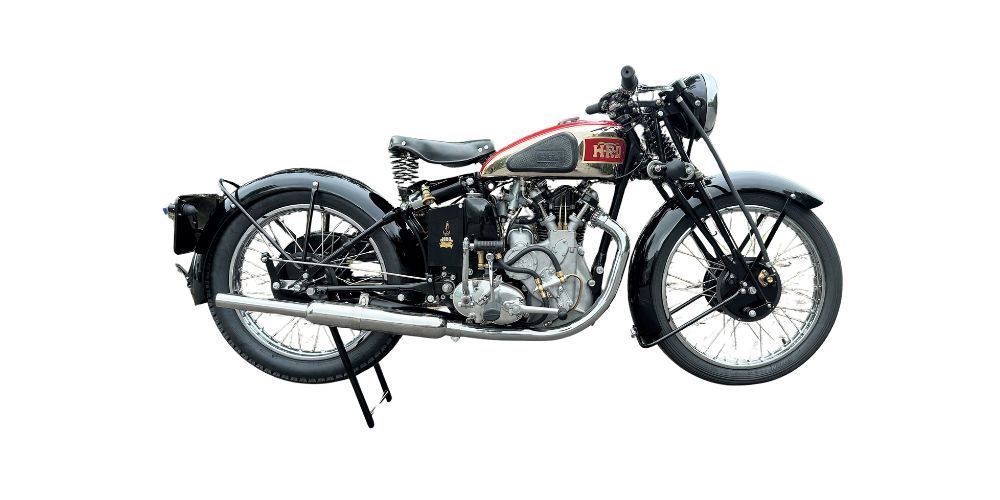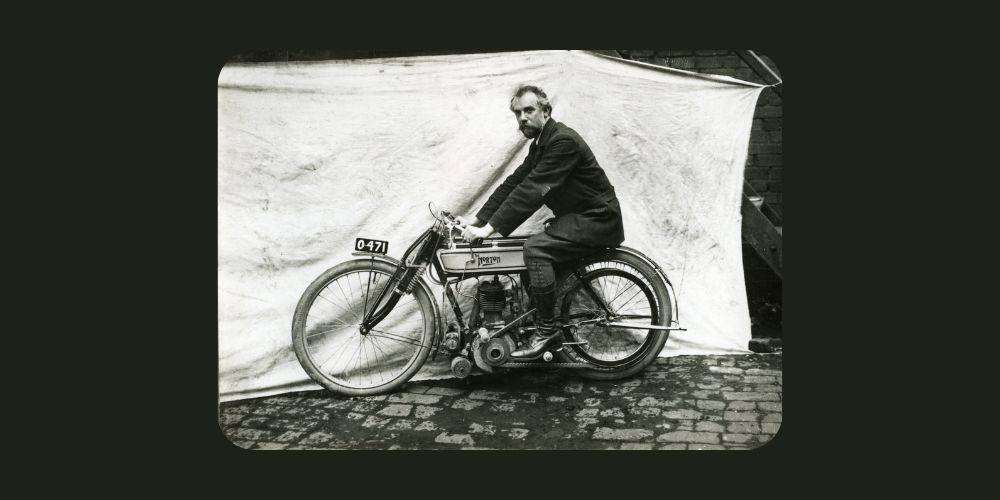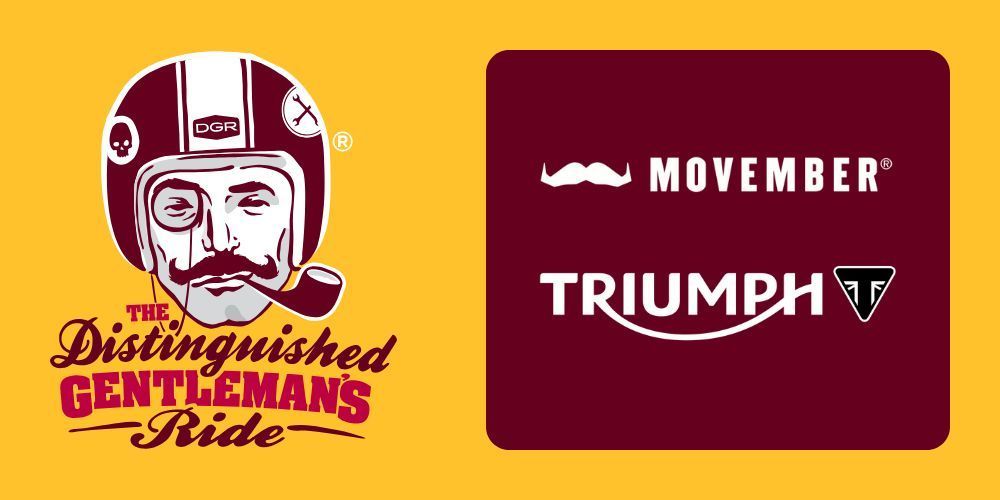Did You Know Maserati Made Motorcycles?
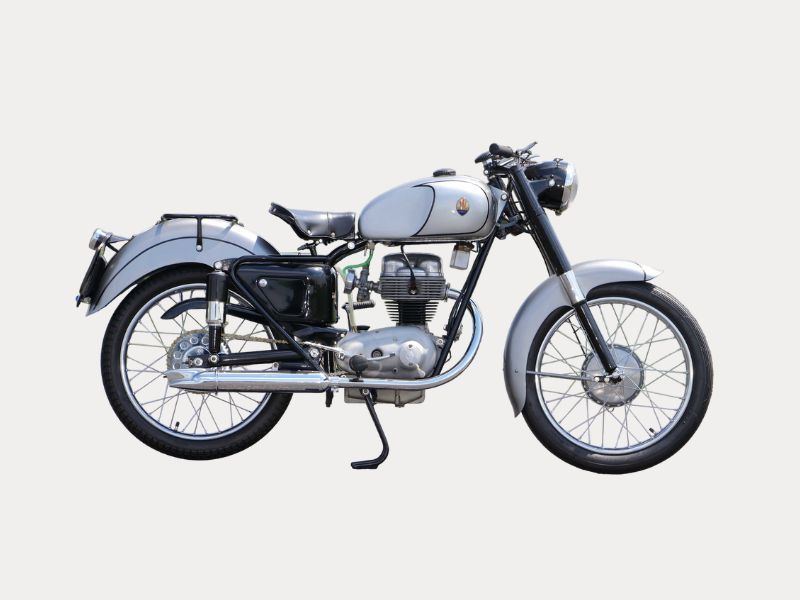
Maserati is a well-known brand in the automotive industry, renowned for producing some of the world's most luxurious and high-performance cars.
However, few people are aware that Maserati was also involved in the motorcycle industry in the 1950s. The company's foray into the two-wheeler market was short-lived, but it had a significant impact that cannot be ignored.
In this article, we'll delve into the history of Maserati motorcycles, from their origins to their eventual decline.
Origin Story
Maserati motorcycles have their origins in the early years of Maserati, when Carlo Maserati, brother of Alfieri Maserati, began building single-cylinder engines that could be fitted onto bicycles.
When World War I began, the company was manufacturing spark plugs under Alfieri Maserati. However, in the 1930s, the Orsi family acquired the Maserati business and expanded production to include batteries, bulbs, distributor caps, and contact sets for cars and motorcycles.
With the growing need for affordable motorized transportation in Italy, the company decided to get into motorcycle manufacturing in the early 1950s. They purchased an existing manufacturer, Italmoto, and transferred motorcycle production to the Maserati factory in Modena.
The company enjoyed initial success, particularly in the 50cc Moped sector, but by the late 1950s, the demand for Maserati motorcycles had declined. This was due to stiff competition from other marques and the production of more competitively priced cars. Sadly, the company ceased motorcycle production in 1960.
Today, Maserati is known for producing high-end sports cars and luxury sedans, but its brief flirtation with motorcycle production remains an interesting footnote in the company's history.
History
Early Years
The roots of Maserati motorcycles can be traced back to the early days of the Maserati brand. Carlo Maserati, founded a workshop just outside Milan where he began crafting single-cylinder engines that could be attached to bicycles.
During World War I, Alfieri Maserati established a spark plug factory that was later transferred to Bologna in 1919. In 1937, however, the Orsi family acquired the Maserati workshop along with the spark plug business, and relocated the company to a larger factory in Modena in 1939.
Thanks to government contracts, this part of the business (spark plug manufacturing) thrived during and after the Second World War. In 1947 Società Anonima Fabbrica Candele Accumulatori Maserati was established and had its headquarters in Via Generale Paolucci 165, Modena.
They diversified their production beyond spark plugs to include various automotive parts like batteries, bulbs, distributor caps, and contact sets that catered to both motorcycles and cars.
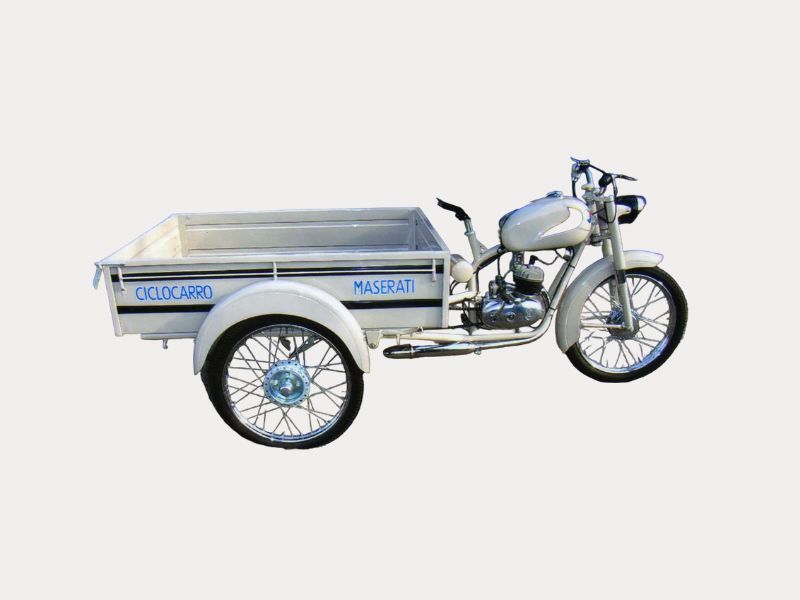
Entry into Motorcycle Manufacturing
In the early 1950s, the Orsi family divided the company's activities among its members, with Ida Orsi receiving the spark plug factory, "Fabbrica Candele e Accumulatori Maserati," and the right to use the Maserati name and the 'Trident' logo.
Due to the rising need for affordable motorized transportation in Italy at the time, the company chose to venture into motorcycle manufacturing. To save the cost of building a motorcycle from scratch, it purchased an existing manufacturer, Italmoto, in Bologna, in 1953. Their first productions after the acquisition included a four-stroke 160cc touring bike and two 125cc two-stroke machines.
The production was later moved to the Fabbrica Candele Accumulatori Maserati factory in Modena where Maserati introduced its own model—the L/125/T2—based on the German DKW design.
This marked the beginning of Maserati's motorcycle manufacturing history with several new models introduced in the following years, ranging in engine size from 50 cc to 250 cc. The 160cc four-stroke touring bike previously produced by Italmoto was also rebranded as the Tipo 160/T4 with the Maserati logo.
Success and Decline
Maserati motorcycles initially enjoyed success, but a decline in demand for batteries and spark plugs prompted the company to put all its efforts into motorcycle production.
They decided to target the 50cc Moped market and introduced two models: the T2/U for men and the T2/D for women. They later released four additional models with engine sizes ranging from 50cc to 125cc, including the 125cc T2/TV and T2/M, and two 50cc sporty models—the 50/T2/S and the 50/T2/SS. These models were loved by young enthusiasts who were drawn to their sleek designs, powerful engines, and nimble handling.
In 1957 however, financial difficulties within the Orsi group were exposed and Maserati withdrew from Formula One and other racing competitions.
The production of more affordable cars from FIAT and competition from other premium motorcycle manufacturers led to a decline in the company's fortunes. As a result, Maserati stopped producing motorcycles in 1960 due to a lack of demand.
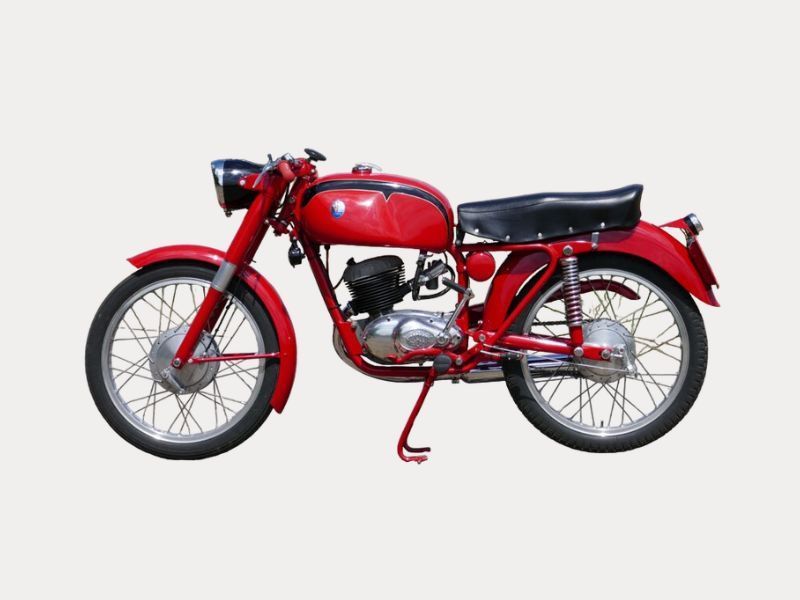
Key Milestones
Maserati's Motorcycle Innovations
While Maserati's motorcycle production was relatively short-lived, the brand made significant contributions with its innovative designs and engineering prowess during the 1950s.
1954 to 1959
- The Tipo L/125/T2 Turismo Lusso was the first model designed and produced by Maserati. It had a two-stroke single-cylinder engine with a displacement of 123 cc, a maximum speed of 60/65 kph, and a dry weight of 80 kg.
- The Tipo 125/GT/Super was another two-stroke single-cylinder engine model with a displacement of 123 cc, able to reach a maximum speed of 90/95 kph and with a dry weight of 86 kg.
- The Tipo L/160/T4 Turismo Lusso featured a four-stroke single-cylinder engine with a displacement of 158 cc. It had a maximum speed of 100/105 kph and a dry weight of 112 kg.
1956 to 1959
- The Tipo 50/T2/U Turismo Uomo was specifically designed for men and featured a two-stroke single-cylinder engine with a displacement of 49.635 cc. The bike had a maximum speed of 50/55 kph, and its dry weight was 52 kg.
- The Tipo 50/T2/D Turismo Donna was designed for female riders and had the same engine specs as the Turismo Uomo, but weighed less, at 50 kg.
- The Tipo 50/T2/S Sport featured a two-stroke single-cylinder engine with a compression ratio of 10.0:1. It had a top speed of 60/65 kph and a dry weight of 52 kg.
- The Tipo 50/T2/SS Super Sport had a two-stroke single-cylinder engine with a compression ratio of 12.0:1. It had a maximum speed of 70/75 kph and a dry weight of 49 kg.
- The Tipo 50/T2/MT Ciclocarro featured a 49.635 cc two-stroke single-cylinder engine with a maximum speed of 38/40 kph and a dry weight of 115 kg. This model was designed as a three-wheeled vehicle for commercial and industrial purposes.
1957 to 1959
The Tipo L/75/T2 Turismo Lusso had a two-stroke single-cylinder engine with a displacement of 74 cc. It had a top speed of 80 kph and a dry weight of 65 kg.
1958 to 1959
The Tipo 250/T4 Gran-Turismo Lusso had a 246.5 cc four-stroke single-cylinder engine with a maximum speed of 115/120 kph and a dry weight of 150 kg.
Pushing the Limits: Maserati's Racing History
Maserati motorcycles not only gained popularity through their impressive features but also through their involvement in racing events. Through its retailers, Maserati S.A. organized several motorcycle races to promote its brand and boost sales. These races included the Motorcycle Tour of Italy, Milan to Taranto, and many other regional, provincial, and urban races.
In 1956, Maserati participated in the Tour of Italy with its 125cc motorcycles in the M.S.D.S. (Macchine Sport Derivate dalla Serie/ Series Production Sports Machines) and Formula 2 classes. The race attracted some notable names of the time, such as Angelo Falzoni, Guido Borri, and Giuliano Trebbi, who competed on Maserati motorcycles.
These racers left a lasting impression on the race's "Roll of Honour," with Falzoni finishing third overall, Borri in fourth, and Trebbi in seventh place. The eight-stage race covered a distance of 2,563 km (approximately 1,600 miles), with the Maserati riders finishing only a minute behind the winner.
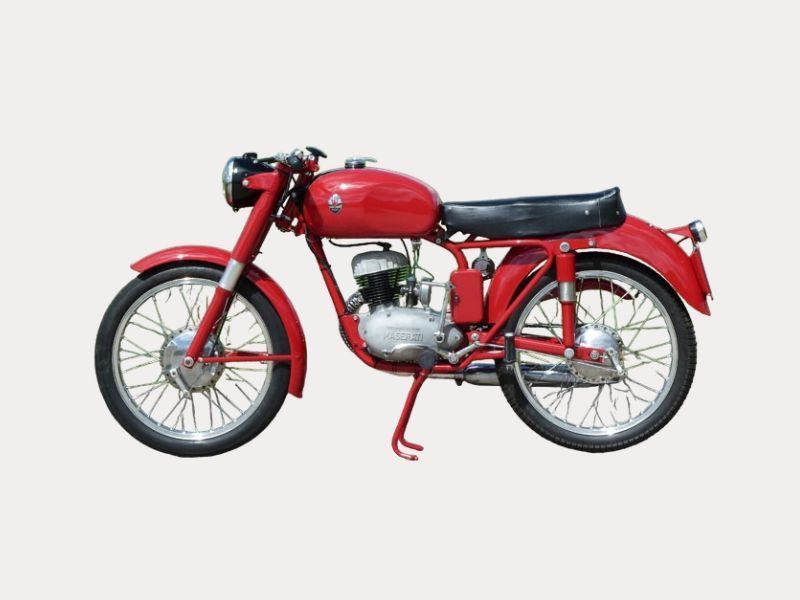
Success at the 1957 Motogiro d'Italia
In 1957, Maserati made its mark in the motorcycle world by entering nine riders on their 125/GTSs in the Formula Three - 125cc class of the Motogiro d'Italia. The riders included Benito Carlotti, Bruno Lombardi, Antonio Nardi, Antonio Petrini, Dante Avoni, Giovanni Petri, Giuliano Trebbi, Antonio Milanti, and Guido Borri.
The Motogiro d'Italia covered 2060 km (approximately 1300 miles) across the Italian peninsula. Out of 318 starters, eight Maserati riders completed the race within the maximum time and finished in the first one hundred places.
These achievements demonstrated Maserati's commitment to producing high-quality motorcycles capable of competing with the best in the industry. The names of the legendary racers who rode Maserati motorcycles are still remembered today.
Noteworthy Statistics
Maserati Motorcycles may have had a brief production period, but they still managed to achieve some notable feats. Here are some interesting statistics from Maserati's motorcycle history.
- Despite facing tough competition from FIAT, who had recently entered the motorcycle market with their small cars, Maserati's motorcycle business held its own. By 1958, the company had produced ten different models and had secured a loyal following among Maserati enthusiasts, who saw owning a Maserati motorcycle as a symbol of prestige.
- Maserati's motorcycles enjoyed strong demand in both domestic and international markets during the first four years of production. The company had established a solid foothold in South America, Europe, and North Africa, making it a well-known brand in the motorcycle industry.
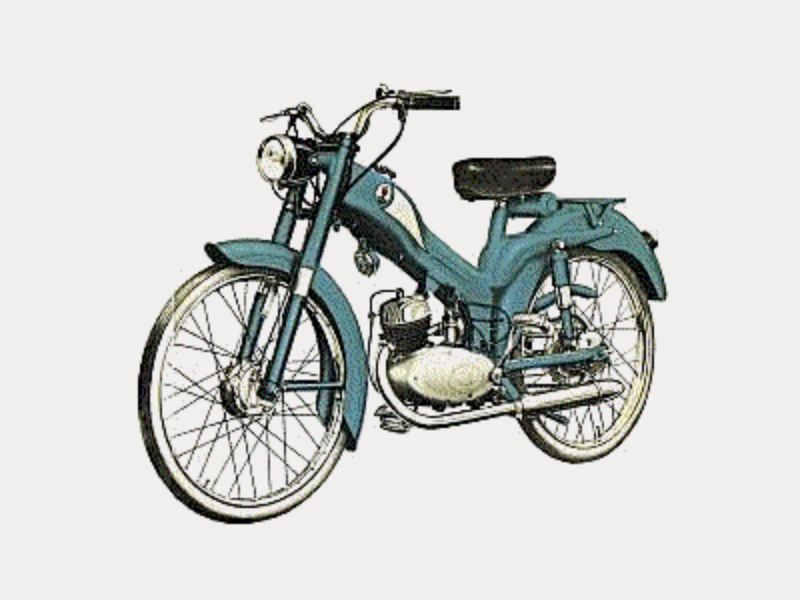
Models & Years
Maserati made several motorcycle models during its brief foray into the motorcycle industry in the 1950s, showcasing the company's engineering and design excellence:
- 1953-1956: 125/T2 – 123 cc – 4.80 hp – 3 gears
- 1953-1959: 160/T4 –158 cc – 7.50 HP – 4 gears
- 1955: 160/T4/TL –158 cc – 7.50 HP – 4 gears
- 1955: 125/T2/TL –123 cc – 4.80 HP – 3 gears
- 1955-1960: 250/T4/GT – 246.5 cc – 12.50 HP – 4 gears
- 1956-1957: 175/T4/S – 174.2 cc – 15.00 HP – 4 gears
- 1956-1959: 125/TV –123 cc – 6.00 HP – 4 gears
- 1956-1960: 50/T2/U – 49.63 cc – 2.40 hp – 3 gears
- 1956-1960: 50/T2/D – 49.63 cc – 2.00 HP – 3 gears
- 1956-1960: 50/T2/S – 49.63 cc – 3.00 HP – 3 gears
- 1956-1960: 50/T2/SS - 49.63 cc - 3.00 hp - 3 gears
- 1957-1960: 125/GTS –123 cc – 7.25 hp – 4 gears
- 1958-1960: 50/T2/MT – 49.63 cc – 2.00 HP – 3 gears
- 1958-1960: L75/T2 – 74 cc – 4.50 hp – 3 gears
- 1959-1960: 125/LE –123 cc – 5.30 hp – 3 gears
About the Author
William Flaiz, passionate about European motorcycle brands, shares his expertise and stories on RunMotorun.com. He offers detailed insights and reviews, aiming to educate both seasoned enthusiasts and newcomers. Flaiz combines personal experience with thorough research, welcoming visitors to explore the rich world of European motorcycles alongside him.

